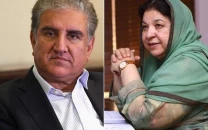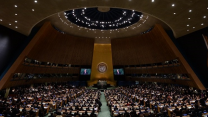Forex reserves rose by 50% during FY 2013-14: SBP
Reserves reaching $9.033 billion on the second-last day of FY 2013-14, up from $6.008 billion at the end of FY 2012-13

Although foreign exchange reserves held by the SBP recorded a week-on-week nominal decrease of 1.7% on June 27, their year-on-year increase was clocked at 50.3%, with the reserves reaching $9.033 billion on the second-last day of fiscal year 2013-14.
Foreign exchange reserves held by the central bank amounted to $6.008 billion at the end of FY 2012-13, SBP data shows.
[infogram url="" height="640"]
Total liquid foreign reserves held by the country, including net foreign reserves held by banks other than the SBP, stood at $13.990 billion, up by 26.9% from $11.019 billion recorded at the end of 2012-13.
However, the country saw its foreign exchange reserves dwindle quickly in the first half of the last fiscal year. They hit rock bottom at the end of January when they amounted to just $3.180.3 billion, thus signifying the import cover of less than one month.
Subsequently, a series of actions from the finance ministry, including arm-twisting of exporters to make them bring back their export proceeds to the country without waiting for the stipulated limit of 120 days, strengthened the level of SBP-held foreign exchange reserves.
According to data compiled by Elixir Securities, the performance of the country’s external account – which consists of a basket of economic measures relating to international transactions - remained strong during the first 11 months of 2013-14. It posted a surplus of $5.7 billion, which is up 1.6 times on a year-on-year basis.
“Major improvement was evident in financial and capital accounts, as both turned positive, while the current account deficit increased by a mere 3% year-on-year,” research analyst Ujala Adnan wrote in a recent note issued to clients.
Capital account balance increased to $1.7 billion in July-May, up 580% from $255 million recorded in the comparable 11-month period of 2012-13. Similarly, financial account balance clocked up at $4.5 billion in the first 11 months of 2013-14 as opposed to a negative $75 million recorded in the same months of the preceding fiscal year.
While the sale proceeds of the Eurobond issue kept the financial account positive, heavy capital inflows from bilateral and multilateral sources spurred the capital account surplus in the outgoing fiscal year, she said.
Pakistan received foreign direct investment (FDI) of $1.36 billion in the first 11 months of 2013-14, which is 2.5% higher than the FDI received during the comparable period of the preceding fiscal year. However, the increase in foreign portfolio investment (FPI) over the same period was disproportionately highly mainly because of the Eurobond issue.
Pakistan attracted $2.3 billion in FPI during the July-May period, which is about 22 times higher than the FPI of $102.3 million received in the comparable 11 months of the preceding fiscal year.
“The external account strengthening seems sustainable under the umbrella of International Monetary Fund’s standby arrangement programme worth $6.7 billion, privatisation programme, 3G spectrum auction, loans from the World Bank, Asian Development Bank (ADB) and other bilateral and multilateral sources,” Adnan noted, adding that the planned issue of $500 million worth of Islamic bonds in the international market will improve foreign exchange reserves further.
As opposed to net external inflows of $4.6 billion in 2013-14, the government has projected net external inflows of $5.4 billion in the current fiscal year. The government’s projection of loans appears to be ‘achievable,’ according to KASB Securities, based on the successful Eurobond issue in the last fiscal year that is currently trading at a significant premium.
“Despite ambitious projections on the external front, we believe the realisation of project/programme loans as well as successful Eurobond and Sukuk bonds can boost foreign exchange reserves,” it said, noting that total liquid foreign exchange reserves are expected to increase to $17 billion by the end of the current fiscal year.



















COMMENTS
Comments are moderated and generally will be posted if they are on-topic and not abusive.
For more information, please see our Comments FAQ